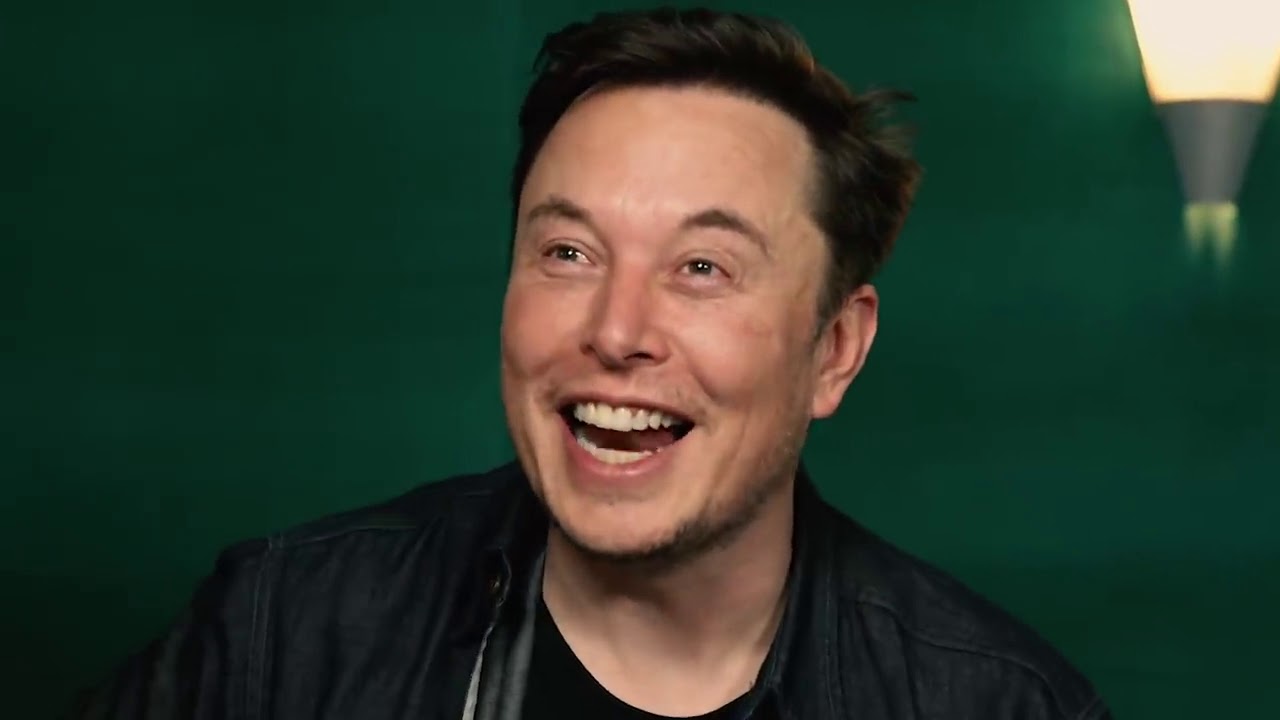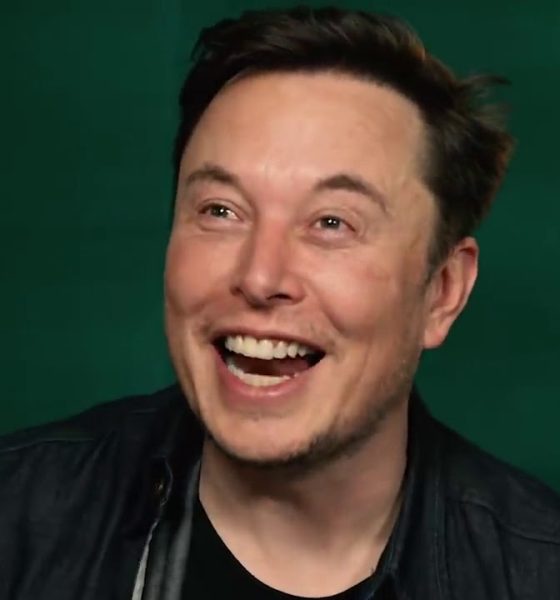

News
Tesla’s “Snake Jazz” is a big FU by Elon Musk to the NHTSA
Elon Musk put up a proverbial middle finger to the National Highway Transportation Safety Administration (NHTSA) earlier this week with his announcement that Tesla vehicles would either play snake jazz or Polynesian elevator music out of an external speaker.
Musk, Tesla’s CEO, has a sense of humor that many can relate to. Although focused and relentless in his path to transitioning the world to sustainable energy, the South African native has a comedic side, which usually comes out when people least expect it.
Once again, that comedic side came out earlier this week, when Musk announced a new addition to the evergrowing arsenal of Tesla Easter eggs, if that’s what this can be referred to.
New Tesla feature coming that enables your car to play snake jazz or Polynesian elevator music through its outside speakers wherever you go
— Elon Musk (@elonmusk) August 20, 2020
Musk announced that his cars would play the relaxing tunes often found in elevators or specific episodes of Rick and Morty, and Tesla fans fell in love with the idea. Even though it is a funny addition to the cars, there seems to be a hidden meaning behind it: Elon is trolling the NHTSA.
The NHTSA passed a mandate a decade ago called “the Pedestrian Safety Enhancement Act of 2010,” which states that electric vehicles must have an audible sound at speeds below 19 MPH. The noise will warn nearby pedestrians of the vehicle’s presence. Because electric cars are missing a combustion motor, the cars make very little noise, which could be a hazard to some pedestrians.
The mandate required noise, but the organization never clarified which sounds were approved or recommended. Therefore, Musk came up with his own.
Because Tesla vehicles manufactured after September 1 of last year will have to have a noise, Musk had to comply, or the company’s cars would be deemed illegal by the government agency.
So he took matters into his own hands, and it wasn’t going to be a stereotypical EV sound.

Many of the noises that EVs have adopted in other countries due to the mandate are unappealing to owners and have the sounds of futuristic hovercraft. A few members of the r/TeslaMotors subreddit stated that they didn’t buy specific vehicles because of the noises that were required if the car was traveling at a low speed.
The noises, while understandable to protect pedestrians, are usually not desirable. Rarely are the sounds reminiscent of an actual engine or motor, a case in point being the Toyota RAV4 hybrid.
Musk’s decision to utilize the tune from a lift, or in some cases, the snake jazz that Rick and Morty discovered in Season 4, Episode 5, titled, “Rattlestar Ricklatica,” is likely a move that no other automaker would take. Then again, the shoutout to Rick and Morty is close to Musk’s heart, after he appeared in an episode as “Elon Tusk, CEO of Tuskla.”
However, Musk’s unorthodox methods are more than just a way to resonate with consumer appeal; they are an indirect way of disagreeing with the mandate while remaining compliant with the safety regulations that the government agency put forth.

News
Tesla FSD fleet is nearing 7 billion total miles, including 2.5 billion city miles
As can be seen on Tesla’s official FSD webpage, vehicles equipped with the system have now navigated over 6.99 billion miles.

Tesla’s Full Self-Driving (Supervised) fleet is closing in on almost 7 billion total miles driven, as per data posted by the company on its official FSD webpage.
These figures hint at the massive scale of data fueling Tesla’s rapid FSD improvements, which have been quite notable as of late.
FSD mileage milestones
As can be seen on Tesla’s official FSD webpage, vehicles equipped with the system have now navigated over 6.99 billion miles. Tesla owner and avid FSD tester Whole Mars Catalog also shared a screenshot indicating that from the nearly 7 billion miles traveled by the FSD fleet, more than 2.5 billion miles were driven inside cities.
City miles are particularly valuable for complex urban scenarios like unprotected turns, pedestrian interactions, and traffic lights. This is also the difference-maker for FSD, as only complex solutions, such as Waymo’s self-driving taxis, operate similarly on inner-city streets. And even then, incidents such as the San Francisco blackouts have proven challenging for sensor-rich vehicles like Waymos.
Tesla’s data edge
Tesla has a number of advantages in the autonomous vehicle sector, one of which is the size of its fleet and the number of vehicles training FSD on real-world roads. Tesla’s nearly 7 billion FSD miles then allow the company to roll out updates that make its vehicles behave like they are being driven by experienced drivers, even if they are operating on their own.
So notable are Tesla’s improvements to FSD that NVIDIA Director of Robotics Jim Fan, after experiencing FSD v14, noted that the system is the first AI that passes what he described as a “Physical Turing Test.”
“Despite knowing exactly how robot learning works, I still find it magical watching the steering wheel turn by itself. First it feels surreal, next it becomes routine. Then, like the smartphone, taking it away actively hurts. This is how humanity gets rewired and glued to god-like technologies,” Fan wrote in a post on X.
News
Tesla starts showing how FSD will change lives in Europe
Local officials tested the system on narrow country roads and were impressed by FSD’s smooth, human-like driving, with some calling the service a game-changer for everyday life in areas that are far from urban centers.

Tesla has launched Europe’s first public shuttle service using Full Self-Driving (Supervised) in the rural Eifelkreis Bitburg-Prüm region of Germany, demonstrating how the technology can restore independence and mobility for people who struggle with limited transport options.
Local officials tested the system on narrow country roads and were impressed by FSD’s smooth, human-like driving, with some calling the service a game-changer for everyday life in areas that are far from urban centers.
Officials see real impact on rural residents
Arzfeld Mayor Johannes Kuhl and District Administrator Andreas Kruppert personally tested the Tesla shuttle service. This allowed them to see just how well FSD navigated winding lanes and rural roads confidently. Kruppert said, “Autonomous driving sounds like science fiction to many, but we simply see here that it works totally well in rural regions too.” Kuhl, for his part, also noted that FSD “feels like a very experienced driver.”
The pilot complements the area’s “Citizen Bus” program, which provides on-demand rides for elderly residents who can no longer drive themselves. Tesla Europe shared a video of a demonstration of the service, highlighting how FSD gives people their freedom back, even in places where public transport is not as prevalent.
What the Ministry for Economic Affairs and Transport says
Rhineland-Palatinate’s Minister Daniela Schmitt supported the project, praising the collaboration that made this “first of its kind in Europe” possible. As per the ministry, the rural rollout for the service shows FSD’s potential beyond major cities, and it delivers tangible benefits like grocery runs, doctor visits, and social connections for isolated residents.
“Reliable and flexible mobility is especially vital in rural areas. With the launch of a shuttle service using self-driving vehicles (FSD supervised) by Tesla in the Eifelkreis Bitburg-Prüm, an innovative pilot project is now getting underway that complements local community bus services. It is the first project of its kind in Europe.
“The result is a real gain for rural mobility: greater accessibility, more flexibility and tangible benefits for everyday life. A strong signal for innovation, cooperation and future-oriented mobility beyond urban centers,” the ministry wrote in a LinkedIn post.
News
Tesla China quietly posts Robotaxi-related job listing
Tesla China is currently seeking a Low Voltage Electrical Engineer to work on circuit board design for the company’s autonomous vehicles.

Tesla has posted a new job listing in Shanghai explicitly tied to its Robotaxi program, fueling speculation that the company is preparing to launch its dedicated autonomous ride-hailing service in China.
As noted in the listing, Tesla China is currently seeking a Low Voltage Electrical Engineer to work on circuit board design for the company’s autonomous vehicles.
Robotaxi-specific role
The listing, which was shared on social media platform X by industry watcher @tslaming, suggested that Tesla China is looking to fill the role urgently. The job listing itself specifically mentions that the person hired for the role will be working on the Low Voltage Hardware team, which would design the circuit boards that would serve as the nervous system of the Robotaxi.
Key tasks for the role, as indicated in the job listing, include collaboration with PCB layout, firmware, mechanical, program management, and validation teams, among other responsibilities. The role is based in Shanghai.
China Robotaxi launch
China represents a massive potential market for robotaxis, with its dense urban centers and supportive policies in select cities. Tesla has limited permission to roll out FSD in the country, though despite this, its vehicles have been hailed as among the best in the market when it comes to autonomous features. So far, at least, it appears that China supports Tesla’s FSD and Robotaxi rollout.
This was hinted at in November, when Tesla brought the Cybercab to the 8th China International Import Expo (CIIE) in Shanghai, marking the first time that the autonomous two-seater was brought to the Asia-Pacific region. The vehicle, despite not having a release date in China, received a significant amount of interest among the event’s attendees.








